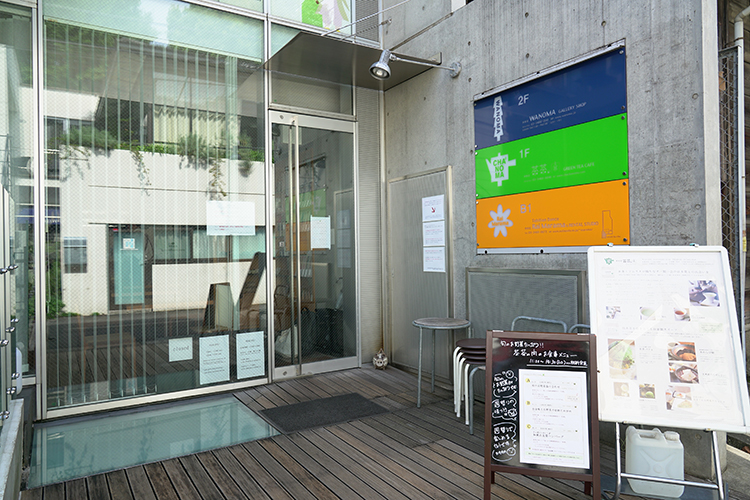Omotesando Chachanoma: Discover the World of Dark Tea
Dec 14,2017
Omotesando Chachanoma: Discover the World of Dark Tea
Dec 14,2017
Regular Japanese meals have long been enriched by many fermented foods including miso, soy sauce, vinegar, mirin rice wine, and fermented natto soybeans. Fermented foods and their umami flavorings are produced by the actions of endemic microorganisms and offer a host of benefits to the human body. Fermented foods, moreover, represent the crystallization of Japan’s great wisdom produced by our ancestors. In this series, we present the people and establishments connecting the fermented foods of today to future generations as well as fermented food recipes. For this installment, we visited Omotesando Chachanoma, a café specializing in Japanese tea run by Watada Yoshi, a Japanese tea sommelier.

“In the coffee industry today, it’s common to enjoy single-origin coffees where the origin and variety of coffee beans are clearly identified. However, we have been providing teas made with single-origin tea leaves — meaning a single variety of tea from a single farm — since we opened in 2005. We have always been committed to brewing each tea leaf variety in its own way to bring out its unique flavor and aroma to the fullest.”
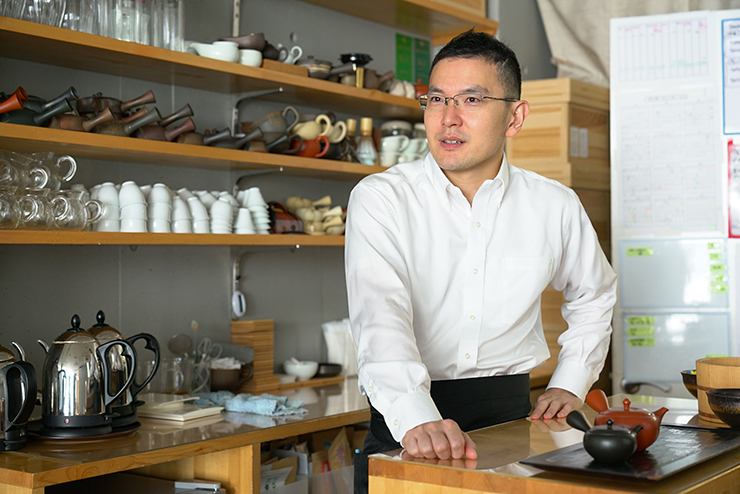
Talking with us is Watada Yoshi, owner of Omotesando Chachanoma, who is passionate about Japanese tea. The café’s menu has over 40 varieties of tea, including some 30 varieties of aromatic green tea. The highlight of the menu, dark tea fermented with lactic acid bacteria — renowned among tea connoisseurs — is one of Watada’s favorites. Unlike green teas and black teas, dark tea is fermented with the power of microorganisms and is rarely found anywhere in the world, although Chinese pu-erh tea is a close relative. Let’s start by looking at how dark tea is made.
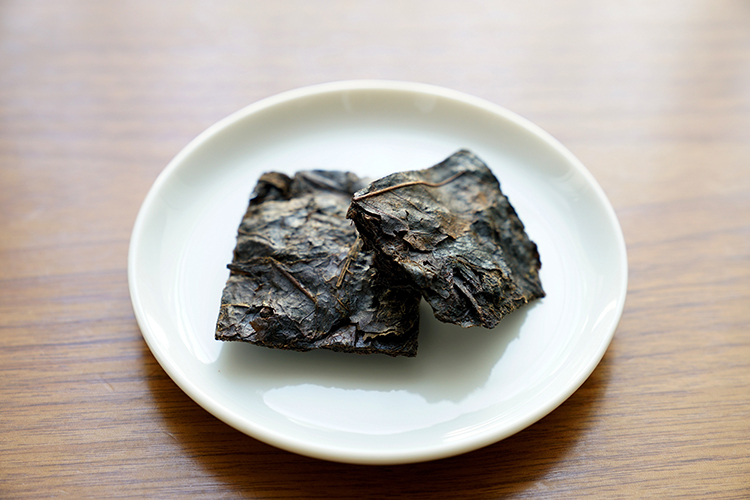
“Our dark tea is made from leaves of the yabukita tea plant grown free of pesticides by farmers in Koichi. The leaves are harvested around July, steamed, and then spread out on woven mats for about 10 days and sprayed with mold. This is the first aerobic fermentation stage. Next, the tea leaves are placed in cedar tubs along with the tea juice extracted while the leaves were steamed and undergo anaerobic lactic acid fermentation for 10 to 20 days. Afterward, the damp, overlapping tea leaves are cut into three- to four-centimeter squares and dried in the sun for about two days to complete the process. Nowadays, few farmers produce this labor-intensive dark tea, making it a rare commodity.”
The process is similar to making pickles. Why go to such lengths to produce the tea?
“The tea is produced along the Seto Inland Sea coast, where vegetables are scarce during the cold season. Some tea farmers in this region apparently began making dark tea to extend the shelf life of their tea leaves. Dark tea was not only enjoyed as tea but also added to rice porridge. The porridge ingredients included small fish and the few wild herbs available locally. Nevertheless, the dark tea seemed to be very good for the body, as it contains lots of plant-based lactic acid bacteria. Fermented rice porridge infused with dark tea is a local delicacy born from the wisdom of the ancients.”
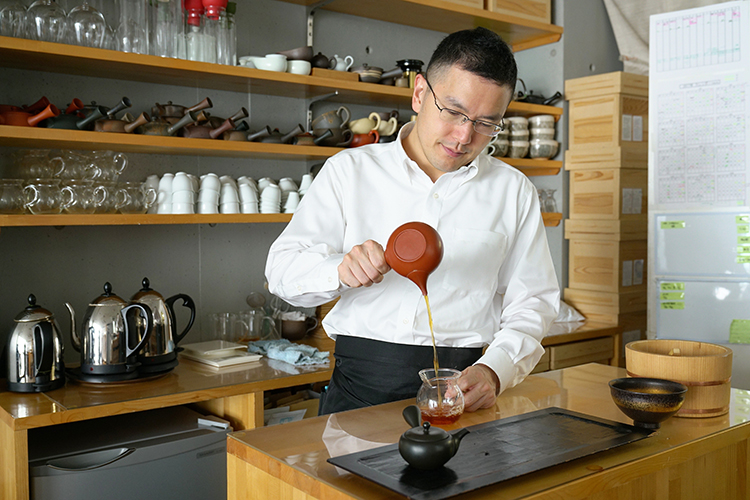
Watada immediately began brewing some dark tea for us. He places about five grams of tea leaves in the teapot, pours hot water over them, and lets them steep for about 30 seconds. The first infusion is a little strong.
Our reaction: So sour, but so sweet. The distinctive acidity produced by the lactic acid bacteria fermentation is intense, and yet it feels refined and gentle. The sweetness is a mellow sweetness like honey. But the wonderful aroma tops everything, as we were enveloped in a fruity fragrance reminiscent of prunes. Chemically speaking, fermenting the tea leaves reduces the catechin and caffeine and eliminates any bitterness and astringency. With the second and third infusions, the dark tea becomes slightly weaker each time, changing the balance of acidity and sweetness and allowing you to enjoy various flavor profiles.
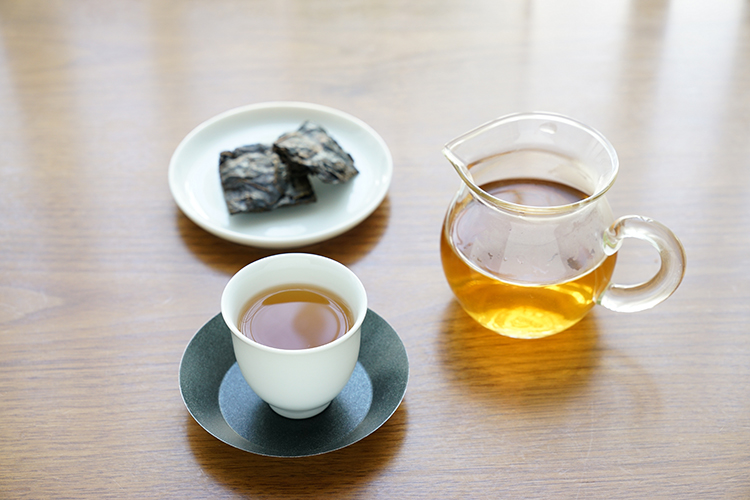
“The dark tea we serve is a single variety and it all comes from a single grower. If we were to blend in other dark teas or if unwanted bacteria got it, the flavor would deteriorate. I would really like more people to get to know the genuine deliciousness of dark tea.”
Discovering that fermenting tea leaves could produce such a rich and fruity flavor reminded us yet again of the power of fermentation.
